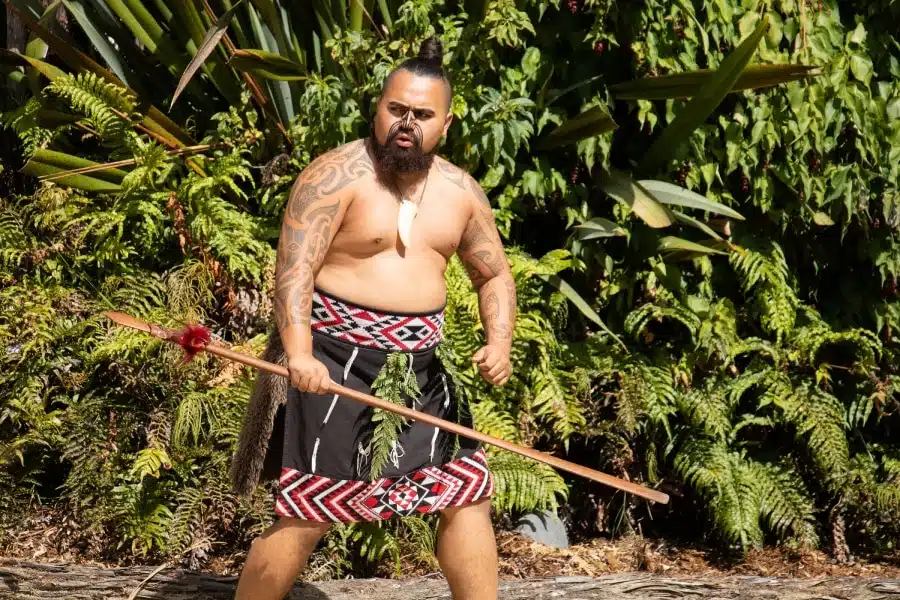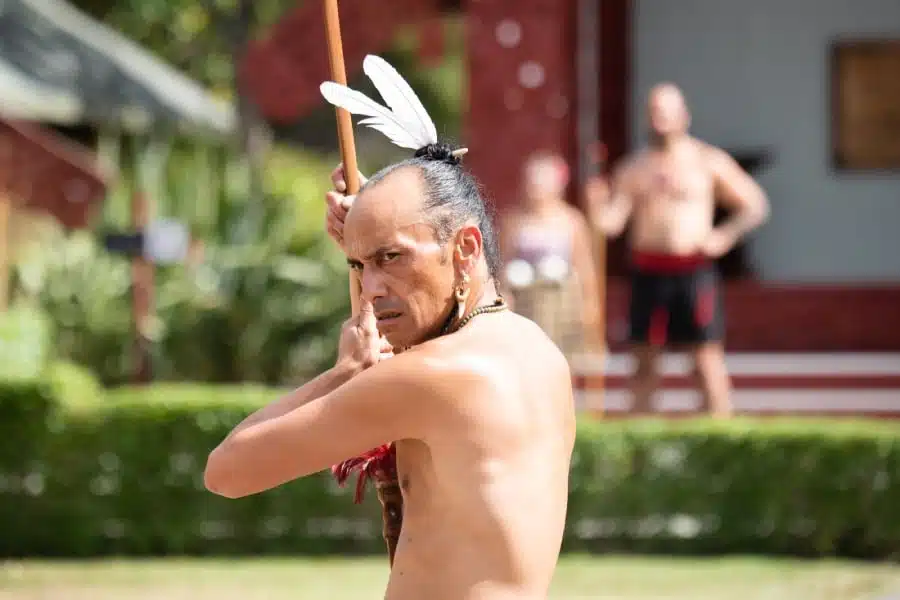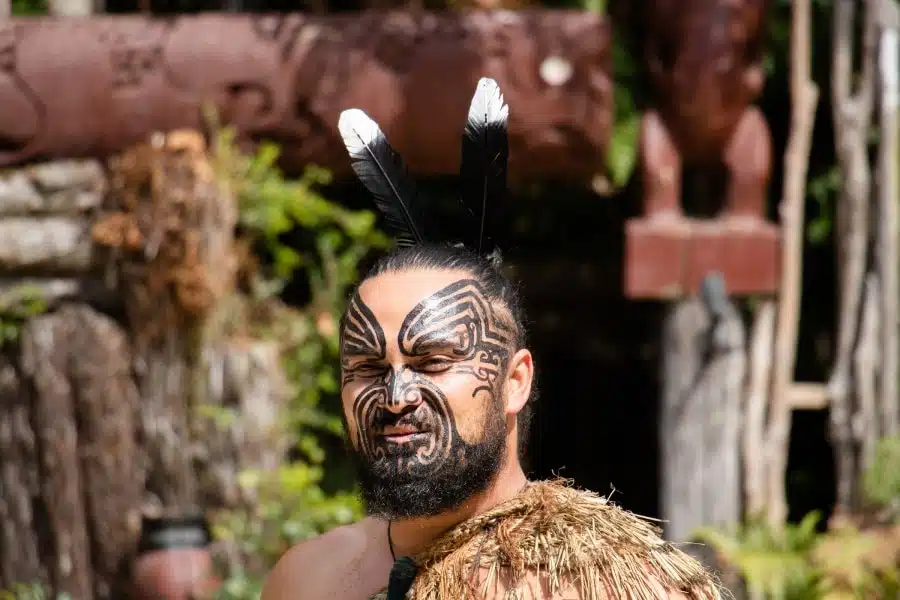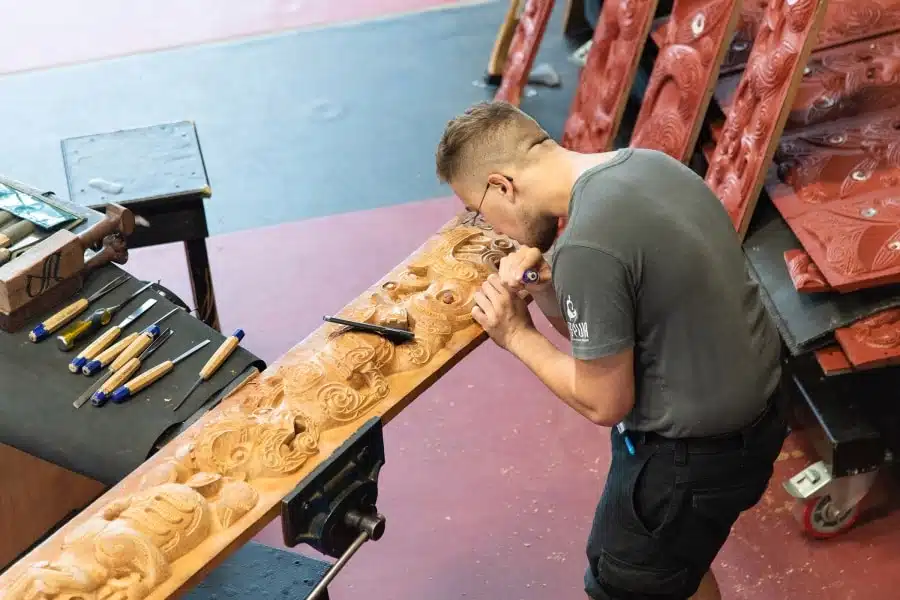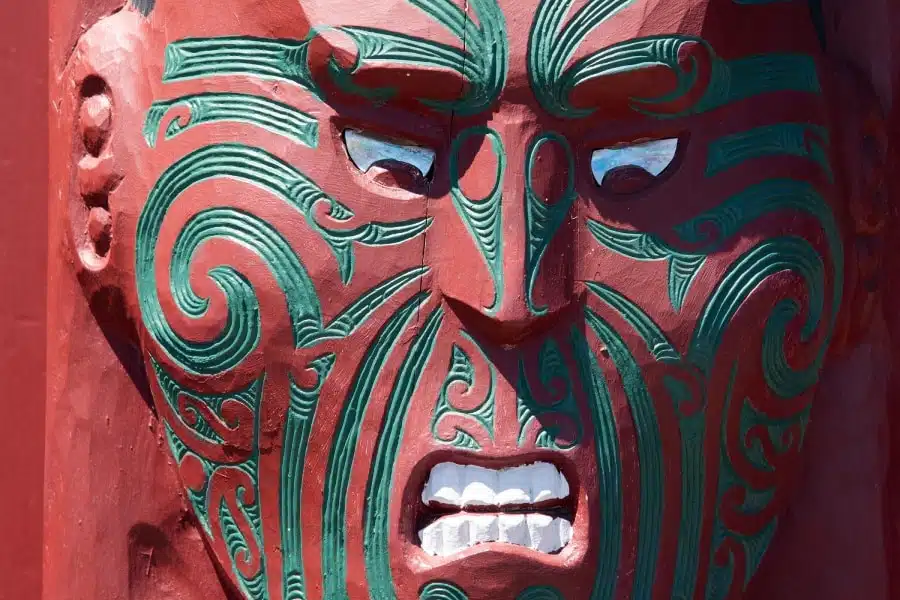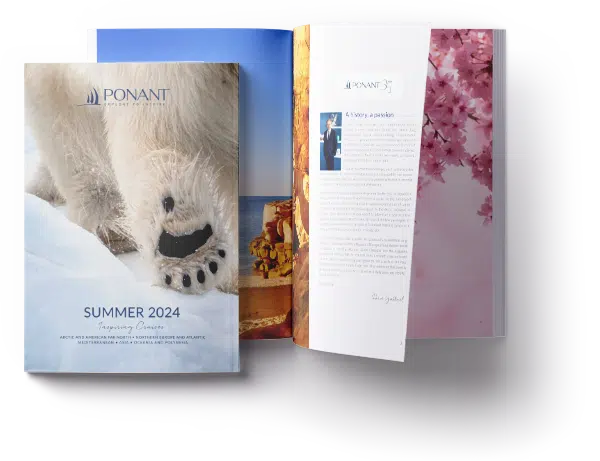Introducing the Māori people
They could have disappeared, but they held firm… Better yet, through their history, culture and arts, the Māori people of New Zealand are reclaiming their stolen territories, reaffirming their cultural, social and spiritual identity in the land of their ancestors. Come meet them!
From Hawaiki to Aotearoa: the origins of the Māori people
Hawaiki is the Māori name for the original homeland of the Polynesian peoples, a mythical island from which they all migrated, to which their souls return after death. Around the 9th century CE, they crossed the waters of the South Pacific in seven canoes (waka), landing in Aotearoa, the ‘land of the long white cloud’. The real-world counterparts to the mythical Hawaiki are the Polynesian islands of Tonga, Samoa and Wallis and Futuna. And Aotearoa is what we now call the North Island of New Zealand, then untouched by humans.
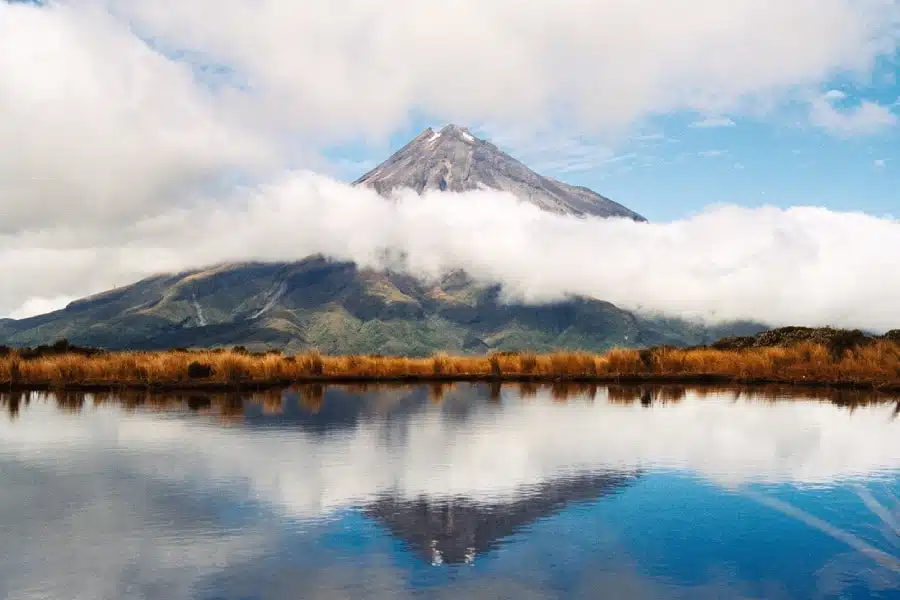
Europeans, known as Pākehā (non-Māori), first came to New Zealand in the 17th century, with successive waves continuing to settle there until the 19th century. Relations between the Māori and Europeans were sometimes focused on trade, sometimes amicable and sometimes violent – until February 1840 when the Treaty of Waitangi was signed. Considered the official birth certificate of New Zealand, it also symbolises the control of the British Crown over the territory. And while it was feared that the Māori people would disappear, gradually assimilated by the Europeans, they survived, successfully preserving their language, dances, songs, history and myths through the centuries. Today, the Māori make up almost 15% of New Zealand’s population, mainly concentrated in the North Island, the land of their ancestors.
New Zealand facts:
- Māori name: Aotearoa
- Capital: Wellington
- Official language: it has three! English, Māori and NZ sign language.
- Population: 5 million
- Area: 268,021 km2
- Density: 18 people/km2
Pōwhiri or the art of hospitality
It all begins at the marae, the sacred space in front of the wharenui, the communal wooden meeting house and heart of community life, decorated with carved figures of the village ancestors. If you go to the Rotorua region, for example, a hotspot of Māori culture, this sacred space is where you may be asked to attend, or even participate in, a pōwhiri, a highly codified traditional welcoming ceremony. Imagine… Before you, a warrior begins dancing a wero, twirling his warrior spear or taiaha. This is a way to ensure that you come in peace. Once your good intentions have been established, the karanga, a languid song of welcome sung by women, begins. Then, hosts and visitors come together to greet each other, exchanging a simple handshake or a hongi, pressing their noses together and touching foreheads: sharing a “breath of life” as the two souls meet. It is also customary in some places for visitors to give their hosts a koha, a gift for the upkeep of the marae. This is followed by some speeches in Māori, songs and a haka – such as the ka mate composed by Te Rauparaha, made famous by the New Zealand All Blacks rugby team. Finally, you gather for a generous feast or hāngī: a communal dish prepared using an age-old method of cooking food in a buried pit oven lined with volcanic embers.
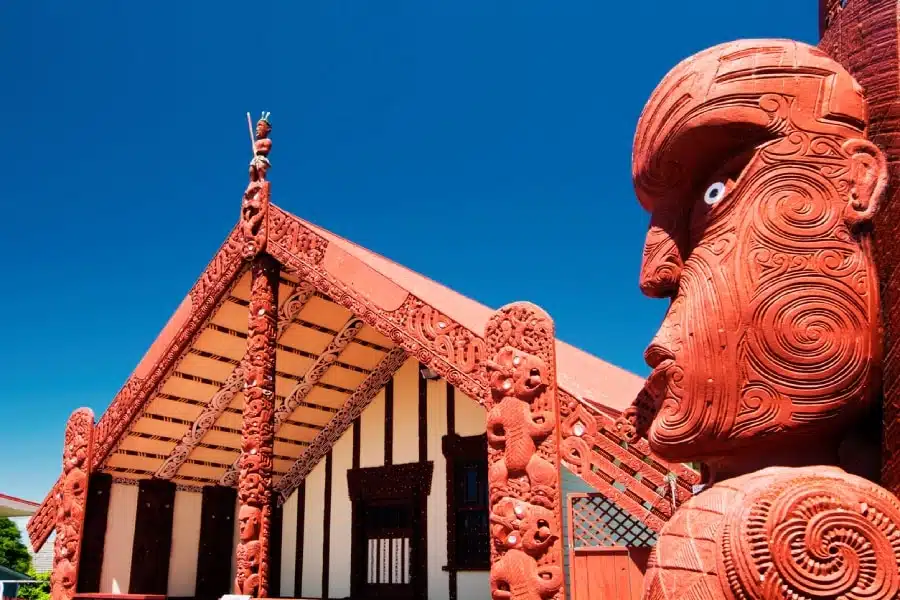
Practised by the Māori as their ancestors did 200 years ago, this unchanging ceremony goes beyond folklore, expressing the resurgence that has been sweeping through the Māori community in New Zealand for the past few decades. A resurgence spurred by a major cultural renaissance.
In a nutshell
- Kia ora: hello
- Tēnā koe: thank you
- Haere rā or Hei kona rā: goodbye
- Nau mai or haere mai: welcome
Spreading the word…
You will hear it during your trip to New Zealand, you will see it everywhere in public places and on street names: te reo, the Māori language. While it has always been used in ceremonial life – the language is preserved in the wharenui – it has enjoyed a real revival throughout New Zealand since 1960 as a symbol of a renewed sense of pride. Taonga refers to a treasured possession in Māori culture. And te reo is one such treasure, today more alive than ever. As demonstrated by Māori language week, the creation of a TV channel and the opening of Māori-language schools, from nursery to high school, providing an opportunity to teach young New Zealanders about the history and culture of their country. Even the Pākehā now commonly use te reo words and know some songs.
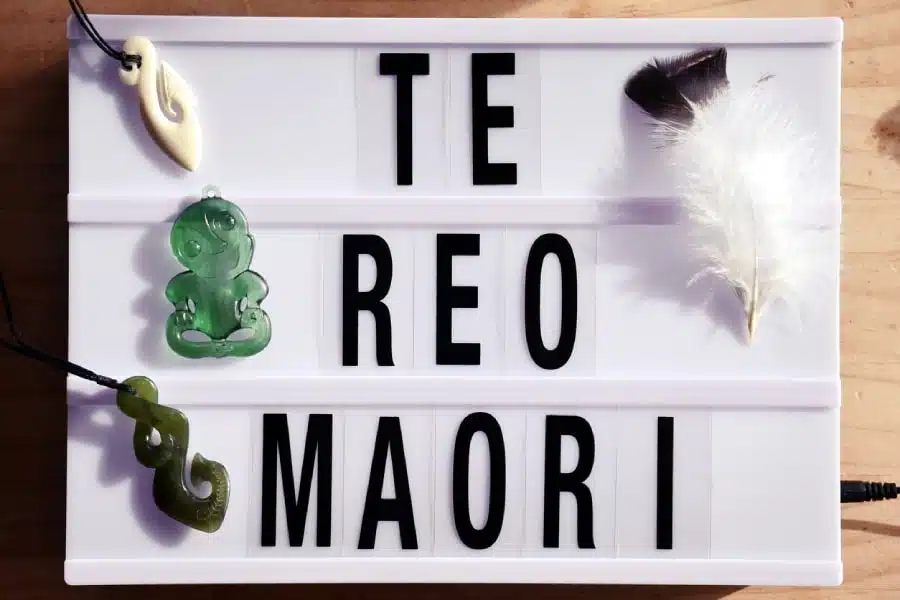
Woven links and engraved culture
This cultural renaissance is also reflected in Māori arts, such as the art of finger weaving (whatu), for example. It is traditionally done by women, who hand down this painstaking technique through the generations to create baskets (kete), rugs (whāriki) and coats (kākahu). More than just a skill, it is a way for Māori people to weave links with their ancestors, which helps the living tackle the challenges life throws at them. This link is not only woven but also engraved! In particular on wood, an essential material in the Māori civilisation. Some of the most remarkable wooden sculptures, tiki – named after the first man to be created in Polynesian mythology – remain one of the oldest known art forms of the Pacific Islands. Keep your eyes peeled during your holiday in New Zealand: you’ll probably see some Māori people wearing one of these hei-tiki around their necks, traditional pendants made of wood, jade or whalebone, worn as a tribute to an ancestor or god. Another “engraving” art is tattooing or tā-moko, impressive tattoos covering the head of men and the chin of women. Much more than an aesthetic ornament, tā-moko is another sacred art, a tribal link intended to tell the story and heritage of the wearer, affirming their social rank and identity.
As you can see, meeting the Māori today means encountering a rich ancestral culture that has become omnipresent in New Zealand, setting the pace of life for all Kiwis, Māori and Pākehā alike. This culture is characterised by strong spiritual and social values, mutual respect, generosity and sharing.
To prepare for your trip:
Read…
- Au pays du long nuage blanc, Charles Juliet
- 50 Ways of Saying Fabulous, Graeme Aitken
- Haka, Caryl Férey
And watch…
The Piano, Jane Campion
Whale Rider, Niki Caro
The Lord of the Rings, Peter Jackson (for the landscapes… and the director, a New Zealander)
Photos credits : ©iStock / ©Studio PONANT
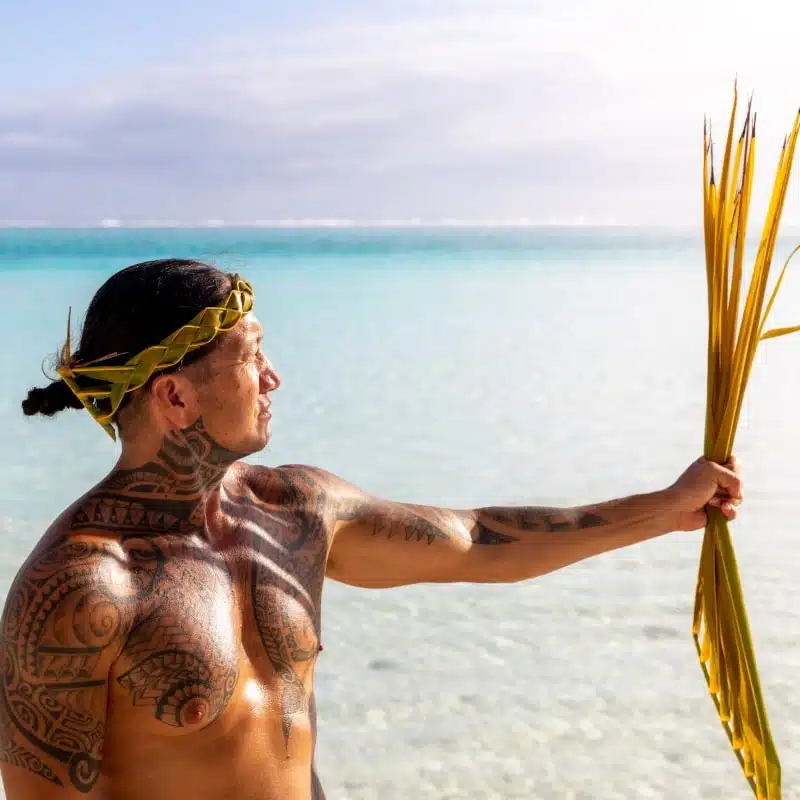
PONANT takes you there
Meet the people at the edge of the world


